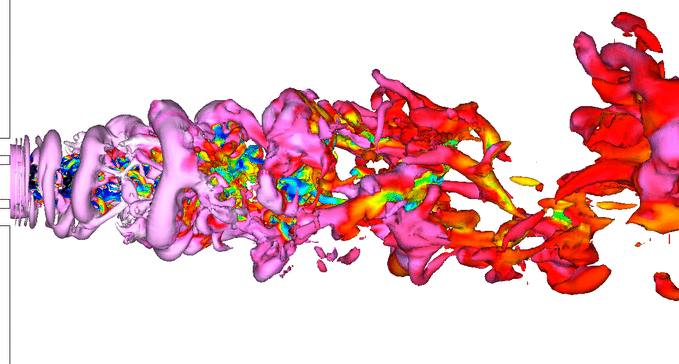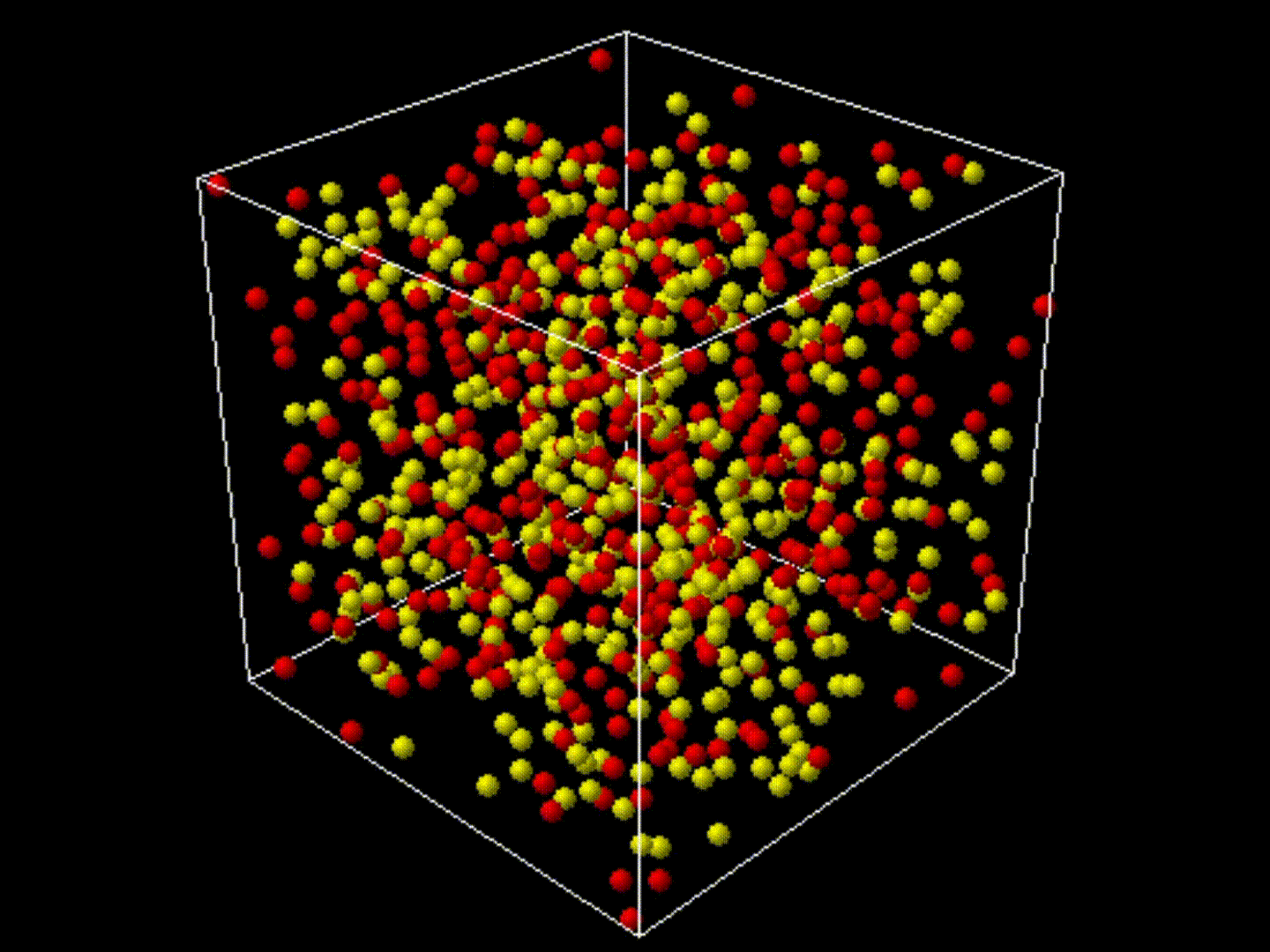Research theme
Liquid rocket engine
Numerical Simulations of Cryogenic Jet Structures under Supercritical Pressures
In liquid rocket engines, propellants are injected and burnt at extremely high
pressure, and the pressure exceeds a supercritical pressure of the injected fluid. The
flow-fields at supercritical pressures show unique behavior because of its specific
thermodynamic characteristics. However, the understanding of the jet and mixing
structures are still limited. Numerical simulations, in comparison with experimental
studies, can provide us detailed information of the flow-field, therefore they are
promising approach for understanding basic physics of the jet mixing at the
supercritical pressures.
Our objective is to study cryogenic jet mixing at supercritical pressures by using
numerical simulations. The numerical simulations of coaxial jet mixings have been
performed by using supercomputers, and it have been shown that the vortex and
turbulence structures in the coaxial jet and the effects of injector exit geometry on the
jet dynamics and mixing. We also focus the jet which is injected transversely into
freestream, i.e. jet in cross-flow (JICF), to study the cryogenic jet mixing at a mixer
component of liquid rocket engines.

A Molecular Dynamics Calculation of the Fluctuation Structure in Diatomic Fluids around the Critical Points
Since the combustion of liquid rocket engine using hydrogen and oxygen as a propellant is largely influenced by the jet flow state of the propellant, analyses of the jet flow by numerical simulation including non-combustion state have been carried out. Currently, in many numerical simulation supposing combustion chambers of rocket engine, a classical mixing rule is combined with Equation Of State (EOS) of single component system for prediction of thermophysical properties in multi-component system. The validation of the accuracy of the EOS in a single-component system has been progressed, but the accuracy of the classical mixing rule applied to mixture system has not been properly validated because of few experimental data on the thermophysical properties particularly in the case of hydrogen-oxygen mixture system.
In this study, we have validated of the classical mixing rule by using molecular dynamics simulation for the imaginary model that hydrogen-oxygen mixture system.
